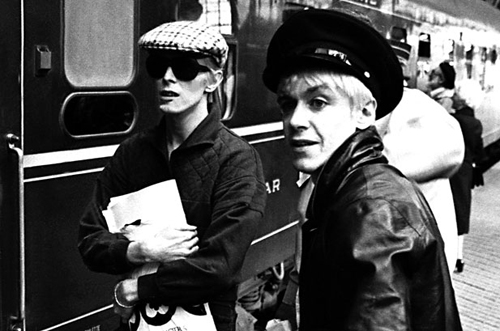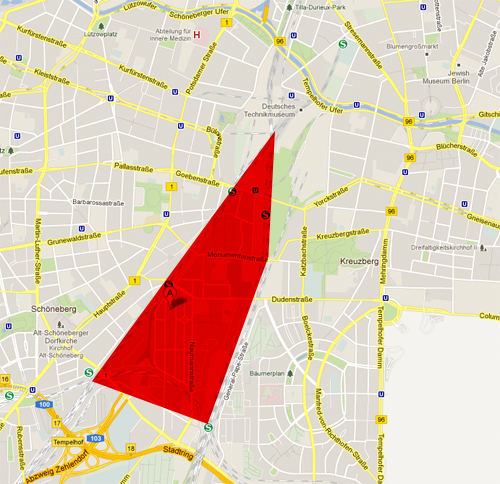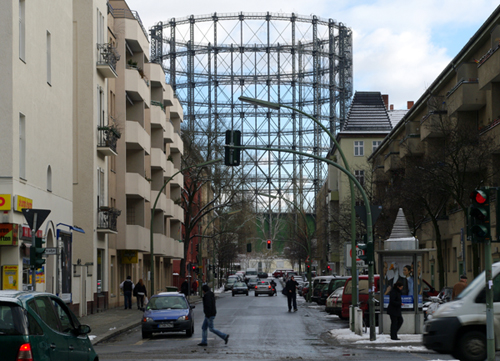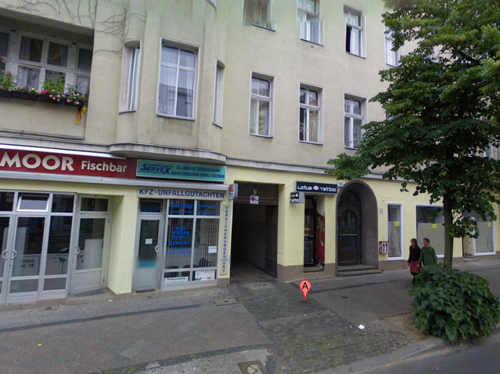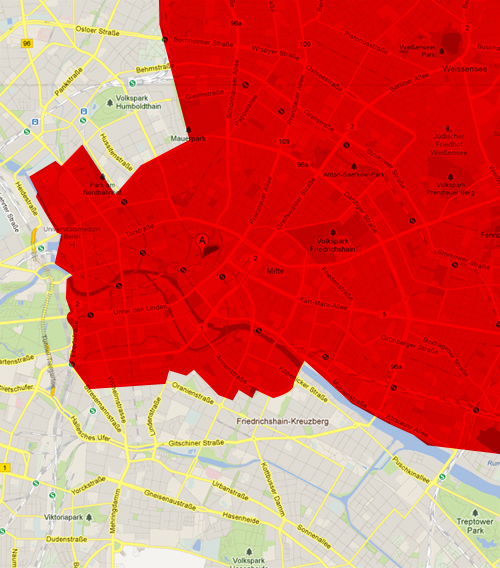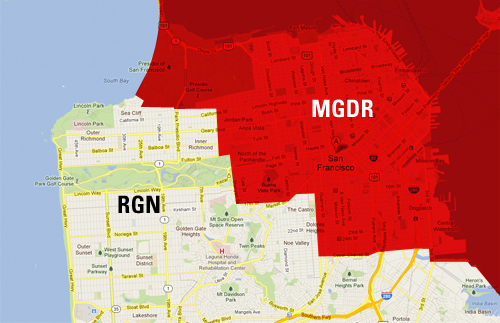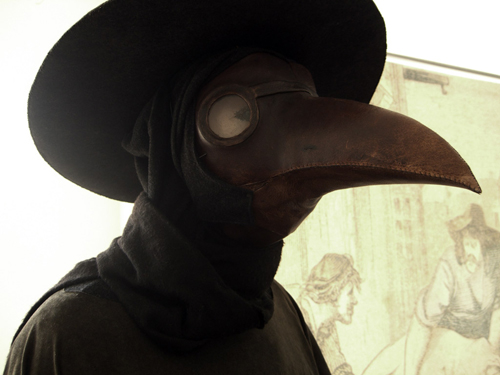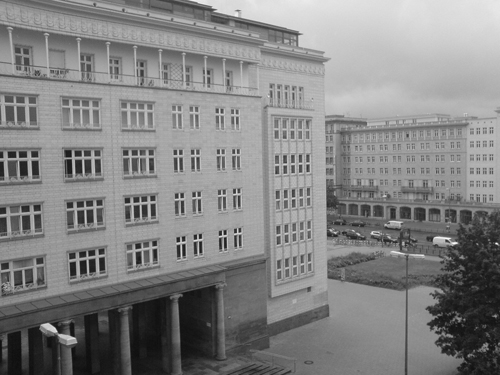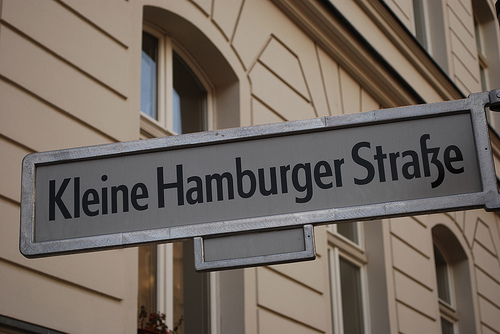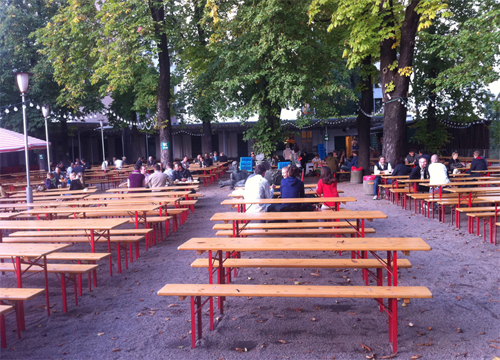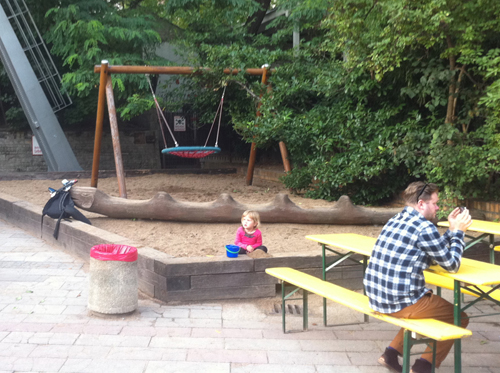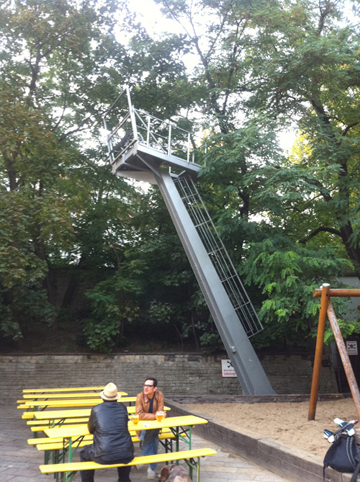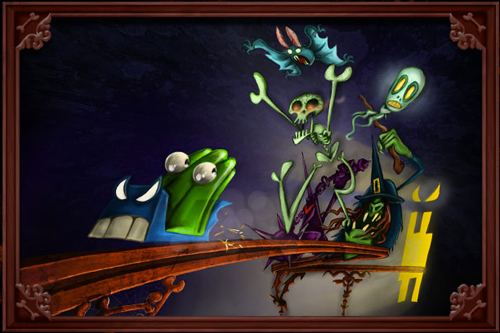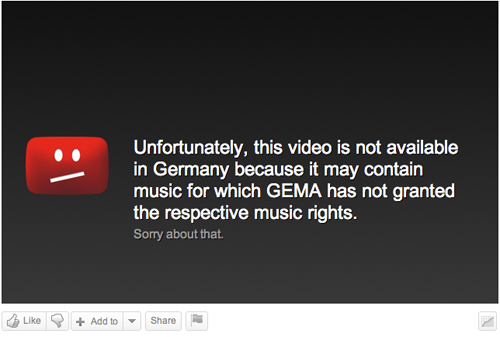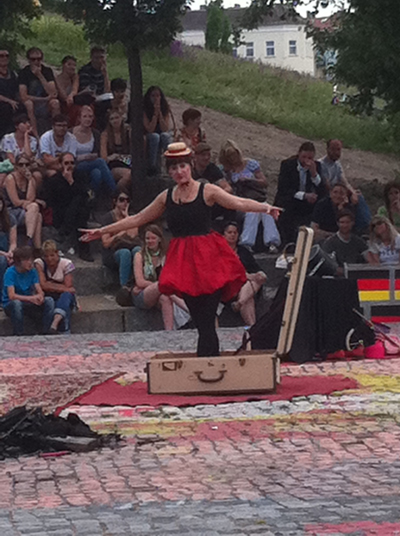Two recent sightings from opposite poles of Berlin’s cultural zeitgeist:
1. Not-So-Little Cleveland Indian
Last week, I was biking home from a basketball game in early evening and ran into this, looming over Alexanderplatz:
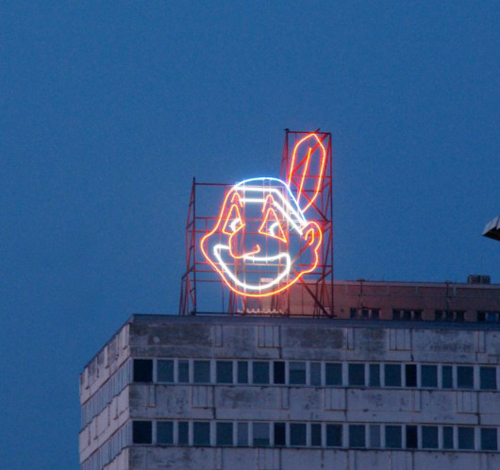
What? Aha, it turns out that this is art— an installation by French media artist Cyprien Gaillard, exploring the legacy and exploitation of arcane, tribal imagery in contemporary advertising culture. As icing on the cake, the installation sits on a soon-to-be-demolished former Stasi building, das Haus der Statistik. Not that Gaillard is blaming the Stasi for the exploitation of Native Americans. At least, I don’t think he is.
2. Homespun Family Circus
A few days later, we took our son to a circus in a remote place called Falkensee, which lies just outside the super-uncool, westernmost part of Berlin, Spandau. Once you get outside of Berlin’s hipness sphere-of-influence, things instantly revert to the basic hapless, redneck-y mundanity that links together all of Central Europe. Indeed, this circus experience wound up being much more of a sobering tale of family values and heartland tenacity than I had been expecting.
First, consider the poster:
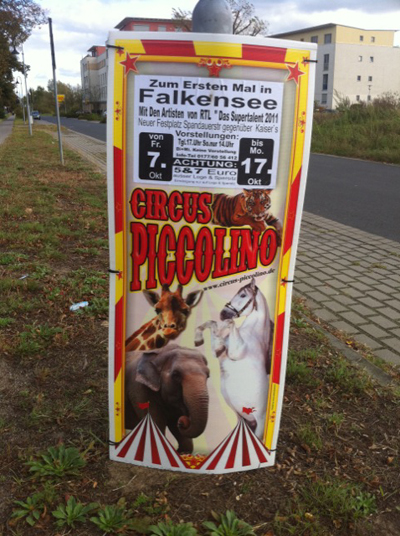
It turns out that, if you run a circus and you make a poster featuring elephants and giraffes, you are not implicitly promising that there are elephants and giraffes at your circus— you are simply invoking the pleasures of the circus atmosphere in a general, non-specfic sense. In this case, there were no such exotic animals on site, and it was apparent at first glance that the whole event was going to be somewhat more small-scale than advertised:
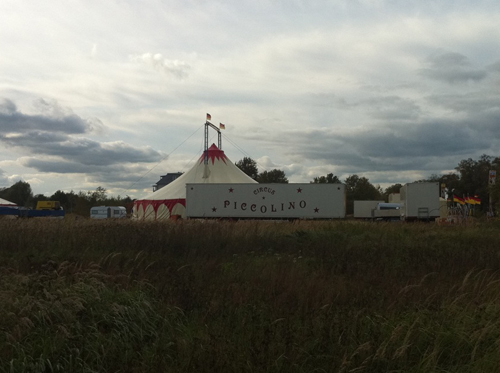
We quickly learned that the Circus Piccolino is a family circus whose patriarch used to perform in the major, large circuses that travel around Europe but then decided to stop once he had kids. Instead, to spare his family the rigors of constant travel, he started his own weeny circus with only the members of his family, a few road-hands and one vulgarian clown whom I took to be a hired mercenary (but might possibly be a cousin). The Circus Piccolino performs only in Germany, thus allowing his daughters to keep up with school and live fairly normal lives when they are not manipulating hula-hoops for the benefit of a tent full of strangers:
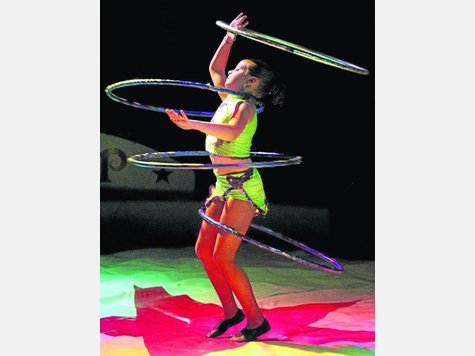
The backstory of the Circus Piccolino was legitimately interesting and inspirational as a tale of adaptation to the realities of family life. Yet it also seemed to be invoked a little too often throughout the show, as an excuse for every dropped hula hoop, every repetitious act involving a lesser family member, every tawdry cut corner (‘I don’t think I’ve ever seen goats performing at a circus before,’ my wife whispered as we watched various barnyard animals jump from table to table). In the end, it started to feel like an over-share that diminished the normal suspension-of-reality that one hopes to achieve while at a circus.
The ultimate buzz-kill moment happened once the performance ended: as we filed out of the big top, you could immediately see the Family Piccolino heading towards their trailer home that was parked right next to the tent, everyone curiously out of character and already half-disrobed from their outfits. While the whole afternoon provided an education glimpse into the realities of the family circus scene, I still would have appreciated if, at the end, the principals could have humored us by dematerializing into a cloud of smoke, or exiting in some comparably romantic manner.

